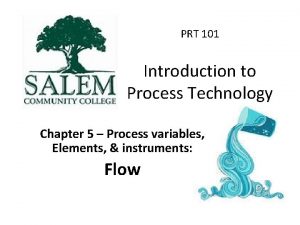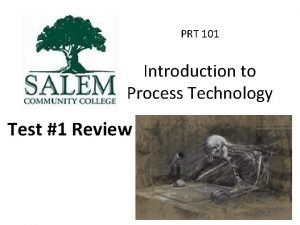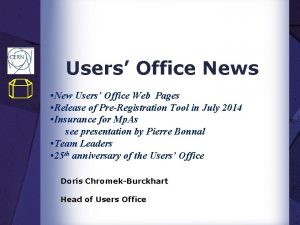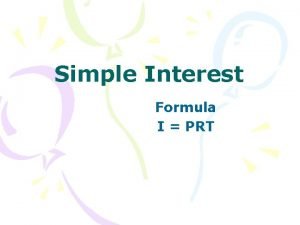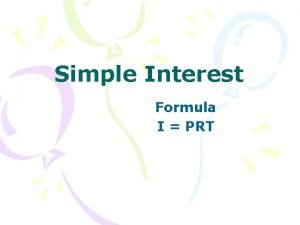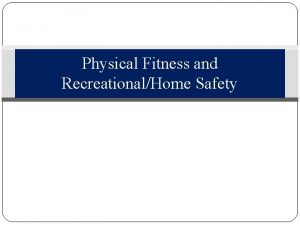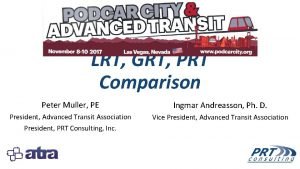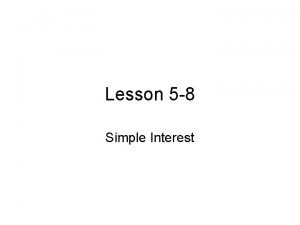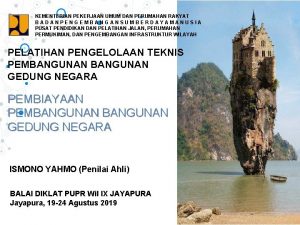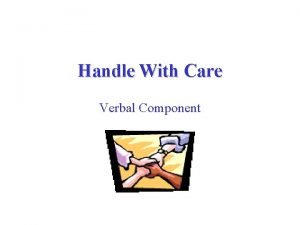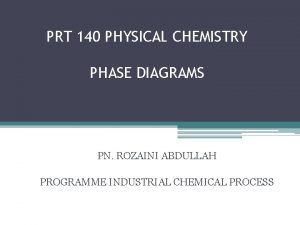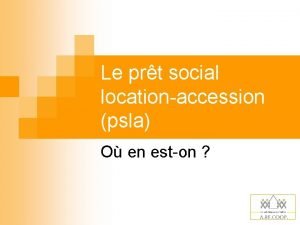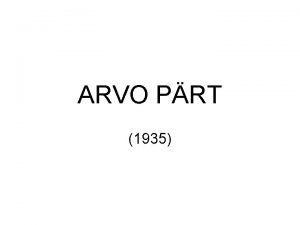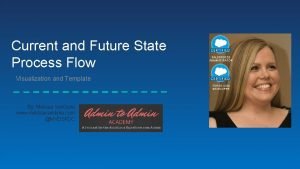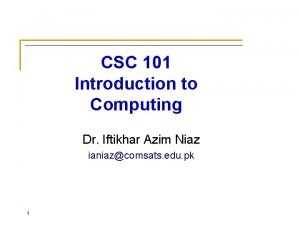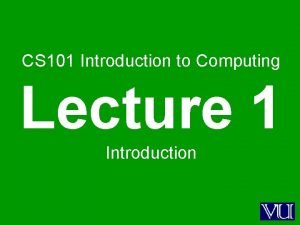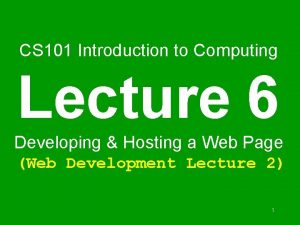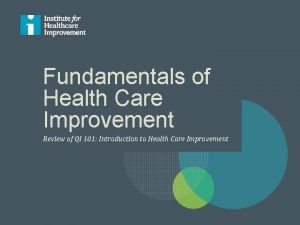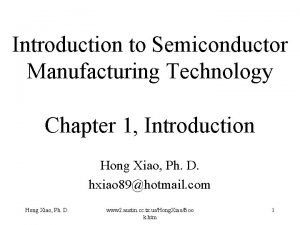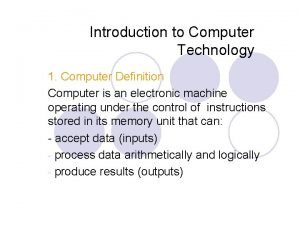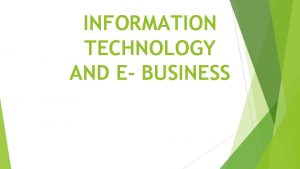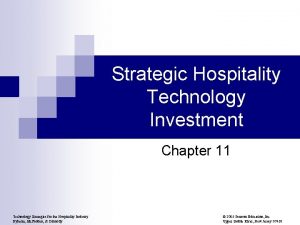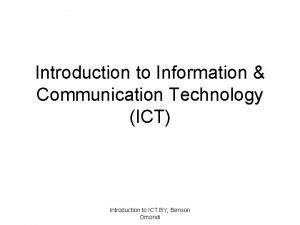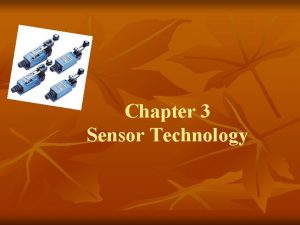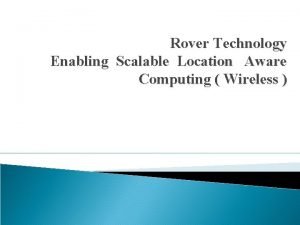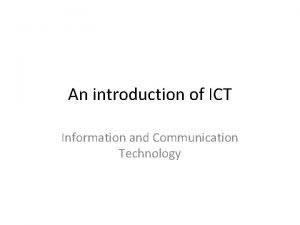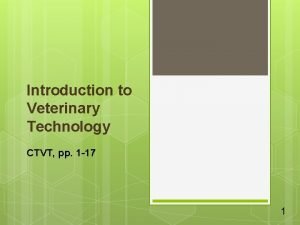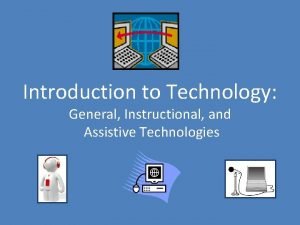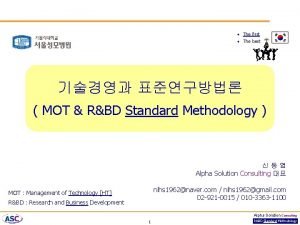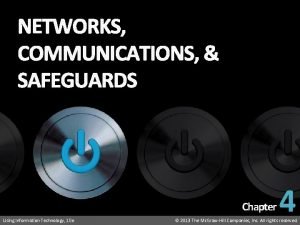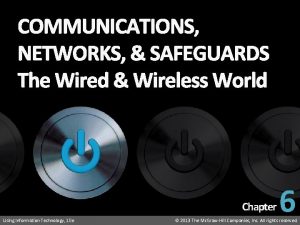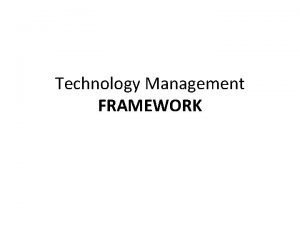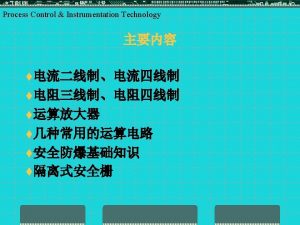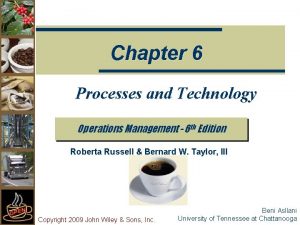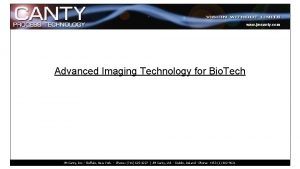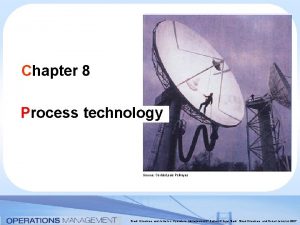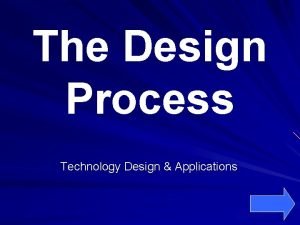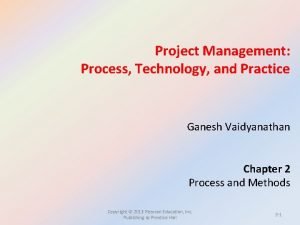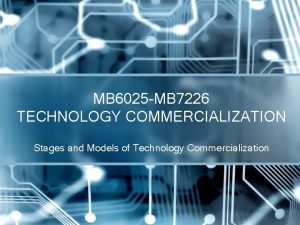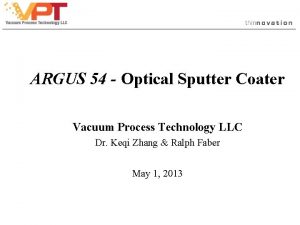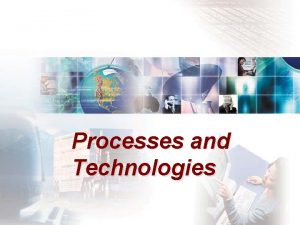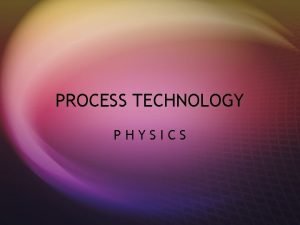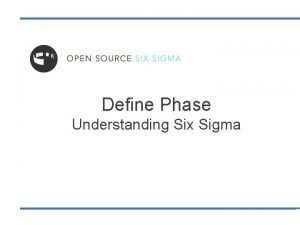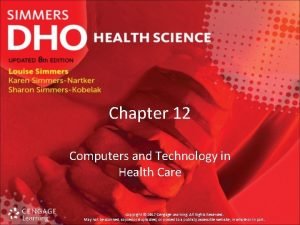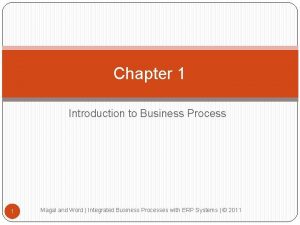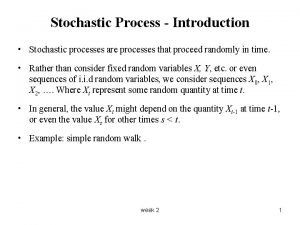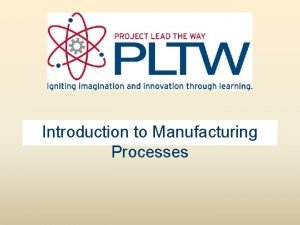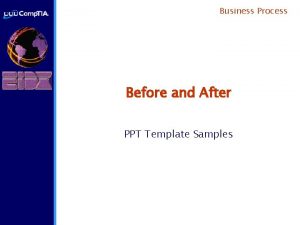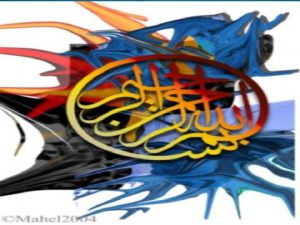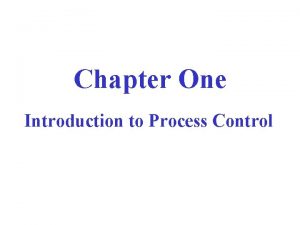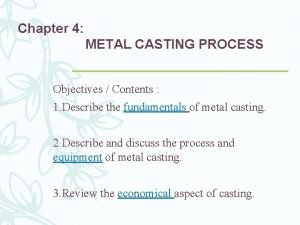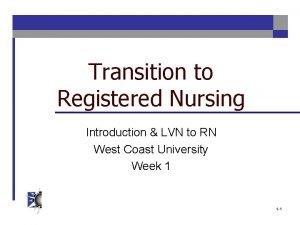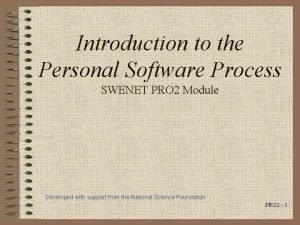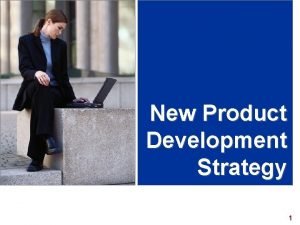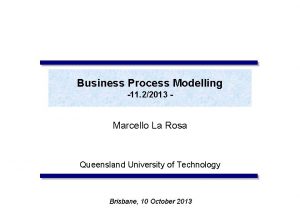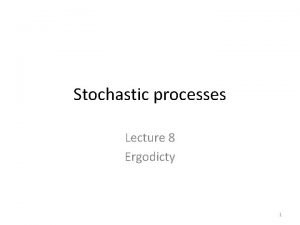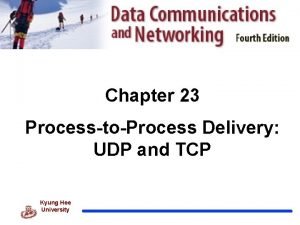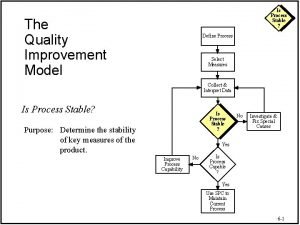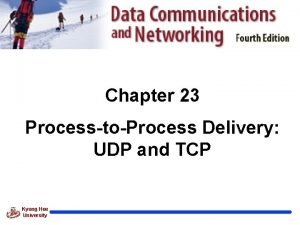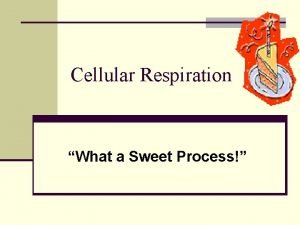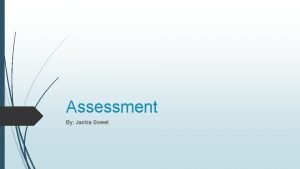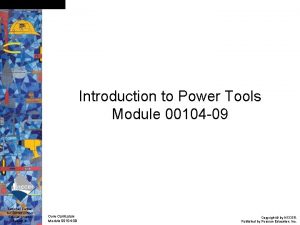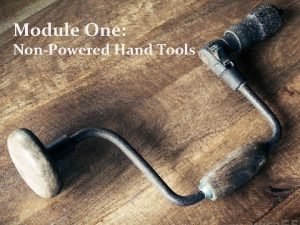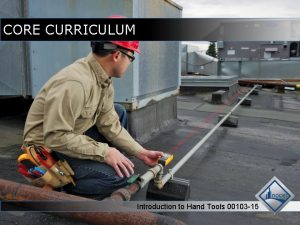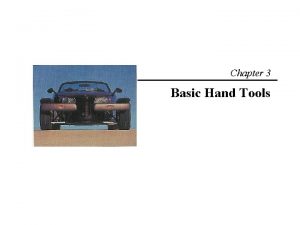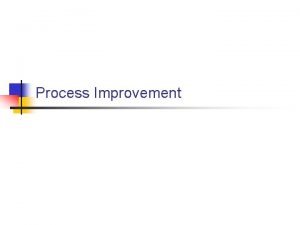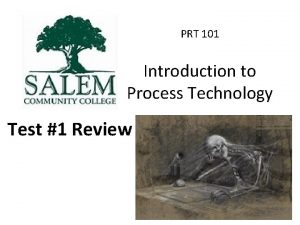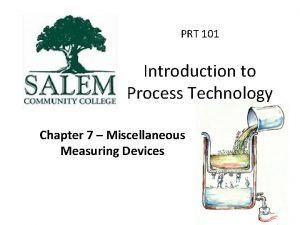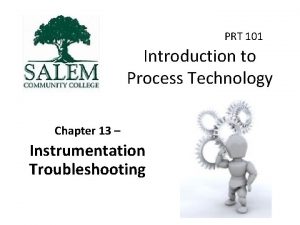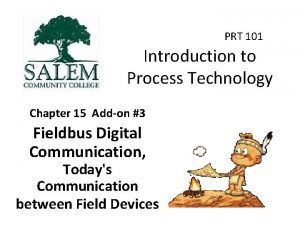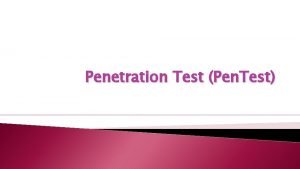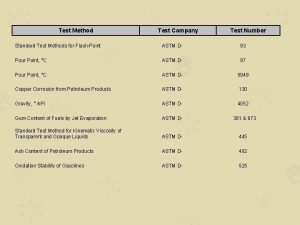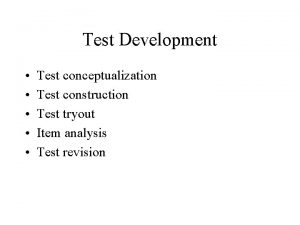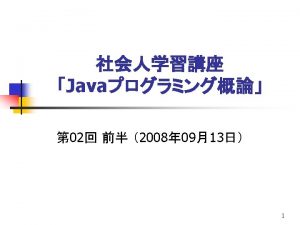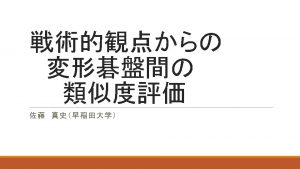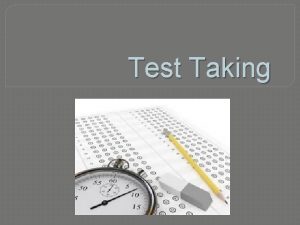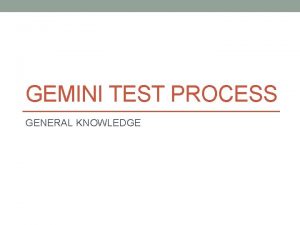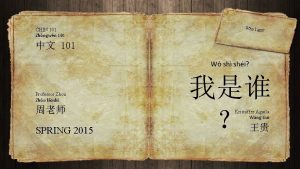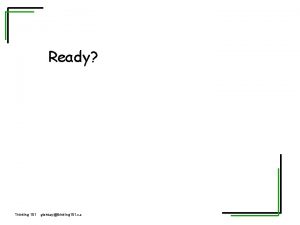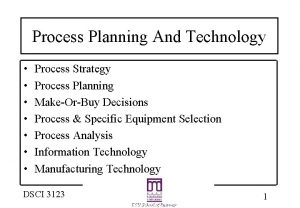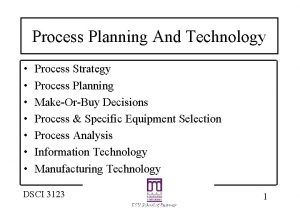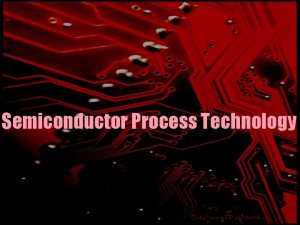PRT 101 Introduction to Process Technology Test 1














































































- Slides: 78

PRT 101 Introduction to Process Technology Test #1 Review

Test Scores • Highest two were 94 & 92 • Class average was 81

8 folks had trouble with this one: Came for Chapter 1 – page 7; homework page 18 This one is basic understanding of instrument system.

7 folks had trouble with this one: Came from homework Chapter 2, page 36… When doing homework, if in doubt, RESEARCH the chapter for the answer… it will help you to remember. Idea of the course is to learn what various instruments do.

6 folks had trouble with this one: From Chapter 3, page 43… Consider that “ through Matter” is a solid by definitions (see first sentence under “Conduction”)

Only one got both answers to this one: Chapter 3, page 45… “Kelvin scale uses same size as Celsius degree unit” I just has a different zero point.

8 folks had trouble with this one: Came from homework Chapter 4, page 80… again: When doing homework, if in doubt, RESEARCH the chapter for the answer… it will help you to remember. Idea of the course is to learn what various instruments do.

6 folks had trouble with this one: 7. If the mass remains constant and the density of a liquid in a tank decreases, the level of the liquid in the tank_______ A A. Increases; B. Decreases; C. Remains constant; D. Does nothing because density and level are not related. Came from homework Chapter 4, page 80… again: When doing homework, if in doubt, RESEARCH the chapter for the answer… it will help you to remember. Note density & head pressure discussions on pages 66 & 67.

8 folks had trouble with this one: 8. Which type Analyzer would be used to find out what components and their respective percentage are in a sample stream? _______ A. p. H meter; B. Gas Chromatograph; C. ORP Meter; D. Optical Analyzer. B Came from homework Chapter 6, page 114… again: Note Chromatography discussion on page 104

Only 4 folks had trouble with this one: Came from homework Chapter 5, page 93… again: Idea of the course is to learn what various instruments do.

7 folks had trouble with this one Came from homework Chapter 5, page 93… again: Idea of the course is to learn what various instruments do.

No one missed this one! Great! 11. What is important about measuring the percentage of O 2 in the flue gas from fired equipment? ____ C A. Too much O 2 can lead to fouling; B. Too little O 2 can lead to contamination; C. Too much or too little O 2 can lead to dangerous conditions & inefficient combustion; D. Measuring % O 2 is not important.

Only one had trouble with this one

7 folks had trouble with this one Came from homework Chapter 5, page 93… again: Idea of the course is to learn what various instruments.

8 folks had trouble with this one Came from homework Chapter 5, page 93… again: Idea of the course is to recognizevarious instruments do.

All but one got this! 15. True or False: Process technicians are often responsible for monitoring process analyzers and sampling systems.

Three more tests to go! Notice how important those home works are… Use this as a learning effort (review won’t hurt either)

PRT 101 Introduction to Process Technology Chapter 9 – Control Loops: Primary Sensors, Transmitters & Transducers

Transmission of Process Variables

Pneumatic Transmission • Pneumatic lines were often used within hazardous atmospheres • Limited to 600 feet at most – Longer pipe runs = more air volume needed – Compressibility of more air impairs accuracies • Need to convert to electric signals to go beyond. • Most common end elements are pneumatic actuators on valves. – Preferred in hazardous environments (all valves leak, especially through packing around stem) • P/I & I/P Transducers are needed to do convert signal media.

Source of Air for Transmitter Measured variable modulates from (obsolete)

Flapper Nozzle Pneumatic Transmitter 20 psi input → ← 3 - 15 psi output Flapper at X = 15 psi out Flapper at Y = 3 psi out Between = modulated signal

Simple Current Transmitter

Simple Voltage Transmitter

I/P Transducer In this case: Sensor and Transducer are one and the same

Current to Pneumatic Transducer aka – Signal Converter Field draws flapper closer or farther from nozzle Input 3 – 15 psi Output

Pulse Telemetering For long distances • Transmitted in terms of TIME, not magnitude of value. • Cam Follower (rider) positioned by Bourdon Pressure. • Cam rotates at constant speed (synchronous motor). • Rider against cam = switch open • Shortest time = low pressure, etc. • Pulse increases proportionally with pressure

Frequency (Tone) Telemetering Converts to frequency For long distances • Transmitted in terms of FREQUENCY, not magnitude of value. • Frequency is proportional to value Converts back to current

Frequency Telemetering • Signal is in pure audible tone • Duration is proportional to value Frequency is proportional to value • Can be sent by telephone wire, microwave, or coaxial cable

Frequency Telemetering Frequency is proportional to value

BASIC INSTRUMENT CHANNEL PROCESS DETECTOR TRANSDUCER INSTRUMENT CHANNEL AMPLIFIER TRANSMITTER ALARMS REMOTE INDICATION REMOTE CONTROL

DEFINITIONS RANGE The area between the limits within which a quantity is measured. SPAN 25 The mathematical difference between the upper range and the lower range values. 0 100

DEFINITION ELEVATED ZERO RANGE The range in which the zero value of the measured variable is greater than the lower range value. 25 0 RANGE 100

DEFINITION SUPPRESSED ZERO RANGE The range in which the zero value of the measured variable is less than the lower range value. 0 25 100 RANGE

EXAMPLE Measured Variable Range 25 Range Lower Range Value 25 to 100 25 0 100 Upper Range Value 100 Span 125

EXAMPLE Range 100 to 180 psi Lower Range Value 100 psi Upper Range Value 180 psi Span 80 psi

EXAMPLE Measured Variable Range 20 60 Range Lower Range Value 20 to 100 20 100 Upper Range Value 100 Span 80

EXAMPLE Measured Variable Range 100 Range 100 to 20 60 Lower Range Value 100 20 Upper Range Value 20 Span 80





PRT 101 Introduction to Process Technology Chapter 10 – Control Loops: Controllers & Final Control Element Overview

Controller types • Mechanical (Link or Linkage) • Pneumatic (Analog) – 3 15 psi • Electronic (Analog) – 4 20 m. A; 1 5 VDC • Electronic (Digital) – Many different proprietary systems – New versions of Ethernet emerging

Live Zero • Zero reading is – 3 with 3 15 psi (3=0% of scale) – 4 with 4 20 m. A (4=0% of scale) • Does 0= lowest value or broken sensor or controller? • Calibration easier with positive value vs. vacuum or negative polarity source.

Control Loop

Pneumatic Controller Faceplate integral to control mechanism

Front of Controller Panel • • • Auto/Manual Switch Local and/or remote setpoint indicator Setpoint adjustment knob Manual output indicator Process variable indicator Setpoint variable Tag number

Controller Front Panel (Faceplate)

Object: To Align PV & SP “Clothesline Indication”

Around on the side, not visible unless controller was slid partially from the case, but still operating, would be the tuning controls This is so that unauthorized people can not tamper with the tuning settings

Walk up to Panel to Operate

Group View is for Operating • Need to see and adjust – PV, SP, Output, Auto/Manual • Need to view – PV, deviation alarms – Tag & title of loops & group • On/off; sequence step; etc.

Group View of Controllers – Alarm List Above Video view of new DCS systems often mimics traditional faceplates

Faceplates may be “adjustable’ in content when using video screens in newer DCS systems of some brands Minimal – Normal – Expanded

Point Detail View to Access Parameters • Like sliding instrument out from case to adjust tuning, alarm settings, etc. … • On screen, also tuning “chart, ” to/from wire list, “hold value, ” SP ramp/clamp, etc.

Algorithms are used in controllers tp perform specific functions • Stepwise procedure used to accomplish a specific task • Often a logical or mathematical procedure expressed in the form of an equation

Three Basic Control Algorithms • Proportional Control • Integral Control • Derivative Control

Control Actions • Change in process… • Proportional (gain). . . • Integral (reset). . . • Derivative (rate). . . • Normally in combination. . .

Remember our Pneumatic Controller? Let us look at the control mechanism

Pneumatic Control Element 20 psi 0 -100% motion 3 -15 psi

Interactive Pneumatic 3 mode Control Proportional (Gain) Air Relay Technology: Resistor Capacitor Vacuum Tube Transistor Rate (Derivative) Reset (Integral) μP?

3 Mode (PID) Interaction Interactive: P vs. Independent: X I D P X I D Analogy!!

Electric or Pneumatic Controller: 3 mode { Proportional (Gain) Integral (Reset) Derivative (Rate) • Principles same for pneumatic, electro mechanical, electric, electronic………until the microprocessor! • Equations differed with each vendor • Each mode interacted with the others • Required different chassis for P, PI, PD, PID • Change from one to another costly, so was rarely done!

PID Equations Differ with Each Vendor Perhaps three categories in simplest form: exact names vary according to manufacturer • • No standard exists among vendors Vendors may have different equations/different vintages Many variations of filtering & non filtering Greatest differences in use of derivative – NO two alike!

Bumpless transfer between Auto & Man • Do to want to “bump” the output to process • Switch between when PV=SP • Adjust SP • Modern models have “Setpoint Tracking “


Local Controllers • Physically mounted near Process with other instruments in the loop

Remote Controllers • Controller is some distance from process, sensor, final element (valve) • Usually needs transducers for signal

Split Range Controller • Same single controller output operates two different final elements (valves) which likely operate in coordination

Cascade Control Action • One controller output is input to set point of another • Senses temperature • Controller output is the setpoint to second controller (signal cascades) Which controls Flow of heat to process

Ratio Controllers • Output of controller from uncontrolled flow • provides setpoint signal to a secondary controller • to maintain a specific proportion (ratio) of the controlled flow with the uncontrolled flow

Various Final Control Elements • • Fluid control valves Dampers Clutches Brakes Motors Fans Guide Vanes And many others

Manipulated Stream = Controlled Stream • Controlling rate where controlled variable is same stream as manipulated variable Manipulated Controlled

Manipulated Stream ≠ Controlled Stream • Temperature of product exit Heat Source • …is controlling a different flow used as heat source Product Manipulated Controlled

HUH?


 P&id fy
P&id fy Test permis hauturier
Test permis hauturier Cern prt tool
Cern prt tool Prt formula
Prt formula I = p r t
I = p r t Male navy prt standards
Male navy prt standards Mrt prt
Mrt prt Simple interest definition
Simple interest definition Keputusan menteri pupr no 1044/kpts/m/2018 pdf
Keputusan menteri pupr no 1044/kpts/m/2018 pdf Handle with care restraint techniques
Handle with care restraint techniques Carly deposited $800
Carly deposited $800 Prt phases
Prt phases Le prt
Le prt Arvo prt
Arvo prt Ihi leadership alliance
Ihi leadership alliance Current state vs future state slide
Current state vs future state slide It 101 - introduction to computing
It 101 - introduction to computing It 101 - introduction to computing
It 101 - introduction to computing Cs101 vu edu pk
Cs101 vu edu pk Qi 101: introduction to health care improvement
Qi 101: introduction to health care improvement Touch screen technology introduction
Touch screen technology introduction Low voltage
Low voltage Introduction to semiconductor manufacturing technology
Introduction to semiconductor manufacturing technology A collection of unorganized facts
A collection of unorganized facts Discuss about information technology and e-business
Discuss about information technology and e-business Strategic hospitality technology investment
Strategic hospitality technology investment An act of transmitting messages
An act of transmitting messages What is tranduser
What is tranduser Science fusion think central
Science fusion think central Rover technology introduction
Rover technology introduction Introduction to information and communication technology
Introduction to information and communication technology Introduction to veterinary technology
Introduction to veterinary technology Introduction about technology in general
Introduction about technology in general Nti new technology introduction
Nti new technology introduction Introduction to information technology: your digital world
Introduction to information technology: your digital world Introduction to information technology: your digital world
Introduction to information technology: your digital world Technology management process
Technology management process Process control instrumentation technology
Process control instrumentation technology Technological forecasting
Technological forecasting What is process technology in operations management
What is process technology in operations management Techjm.xyz free
Techjm.xyz free Process technology examples
Process technology examples Design process technology
Design process technology Project management process technology and practice
Project management process technology and practice Technology commercialization process model
Technology commercialization process model Vacuum process technology
Vacuum process technology Product process matrix in operations management
Product process matrix in operations management Ptec degree salary
Ptec degree salary Voc vob voe
Voc vob voe Chapter 12 computer and technology in health care
Chapter 12 computer and technology in health care Conclusion paragraph format
Conclusion paragraph format Integrated business processes with erp systems
Integrated business processes with erp systems Stochastic process introduction
Stochastic process introduction List of manufacturing processes
List of manufacturing processes Introduction to business process management ppt
Introduction to business process management ppt Process of curriculum development in pakistan
Process of curriculum development in pakistan Introduction to process control
Introduction to process control Introduction of casting
Introduction of casting Introduction of nursing process
Introduction of nursing process Example of community health nursing diagnosis statement
Example of community health nursing diagnosis statement Introduction to the personal software process
Introduction to the personal software process New product introduction process
New product introduction process Bones practical exam
Bones practical exam Substantive vs procedural due process
Substantive vs procedural due process Business process levels
Business process levels Ergodicity
Ergodicity What is process to process delivery
What is process to process delivery Condylar and coronoid process of mandible
Condylar and coronoid process of mandible Stable quality
Stable quality Process-to-process delivery
Process-to-process delivery Process street vs sweet process
Process street vs sweet process Summative and subjective assessment
Summative and subjective assessment Introduction to power tools nccer
Introduction to power tools nccer Introduction of biochemical test
Introduction of biochemical test Introduction to computer science midterm exam test
Introduction to computer science midterm exam test A tool used to hold objects firmly in place is called
A tool used to hold objects firmly in place is called Nccer module 3 hand tools
Nccer module 3 hand tools Basic tools and basic hand operations
Basic tools and basic hand operations Test process improvement
Test process improvement
